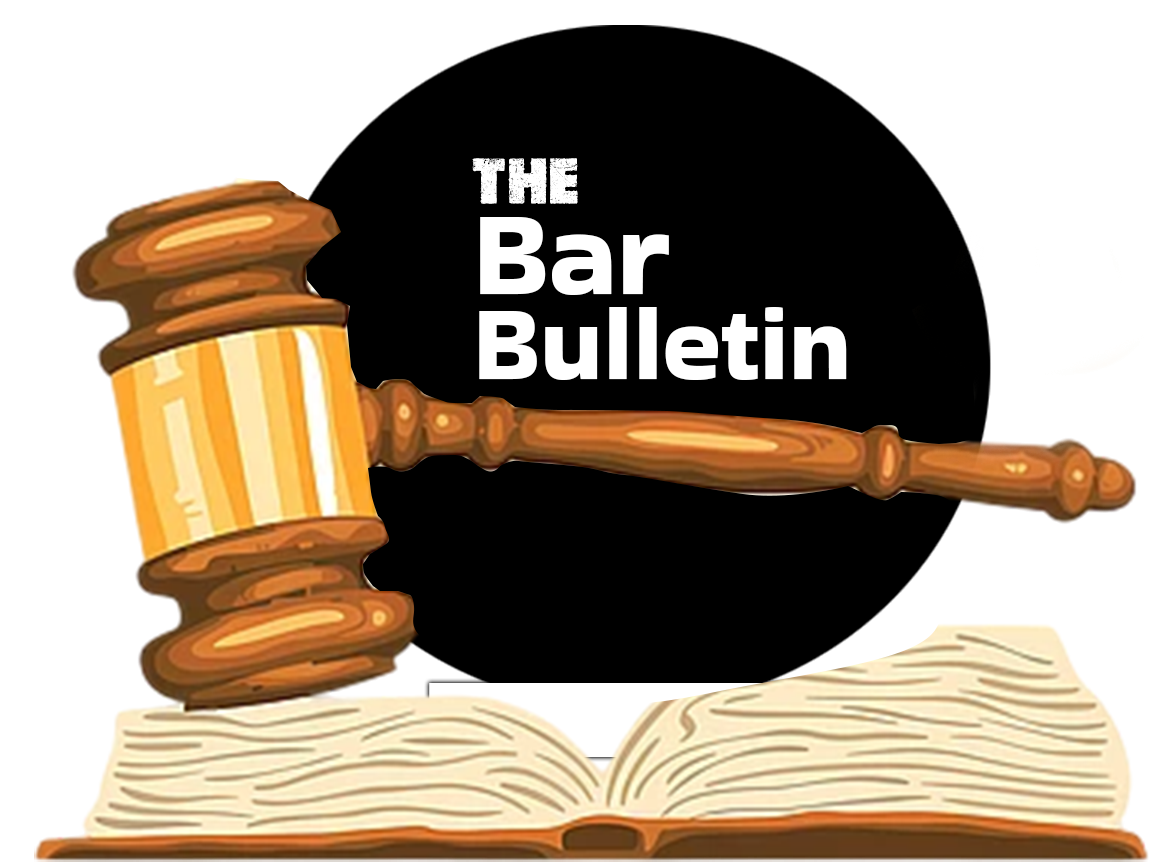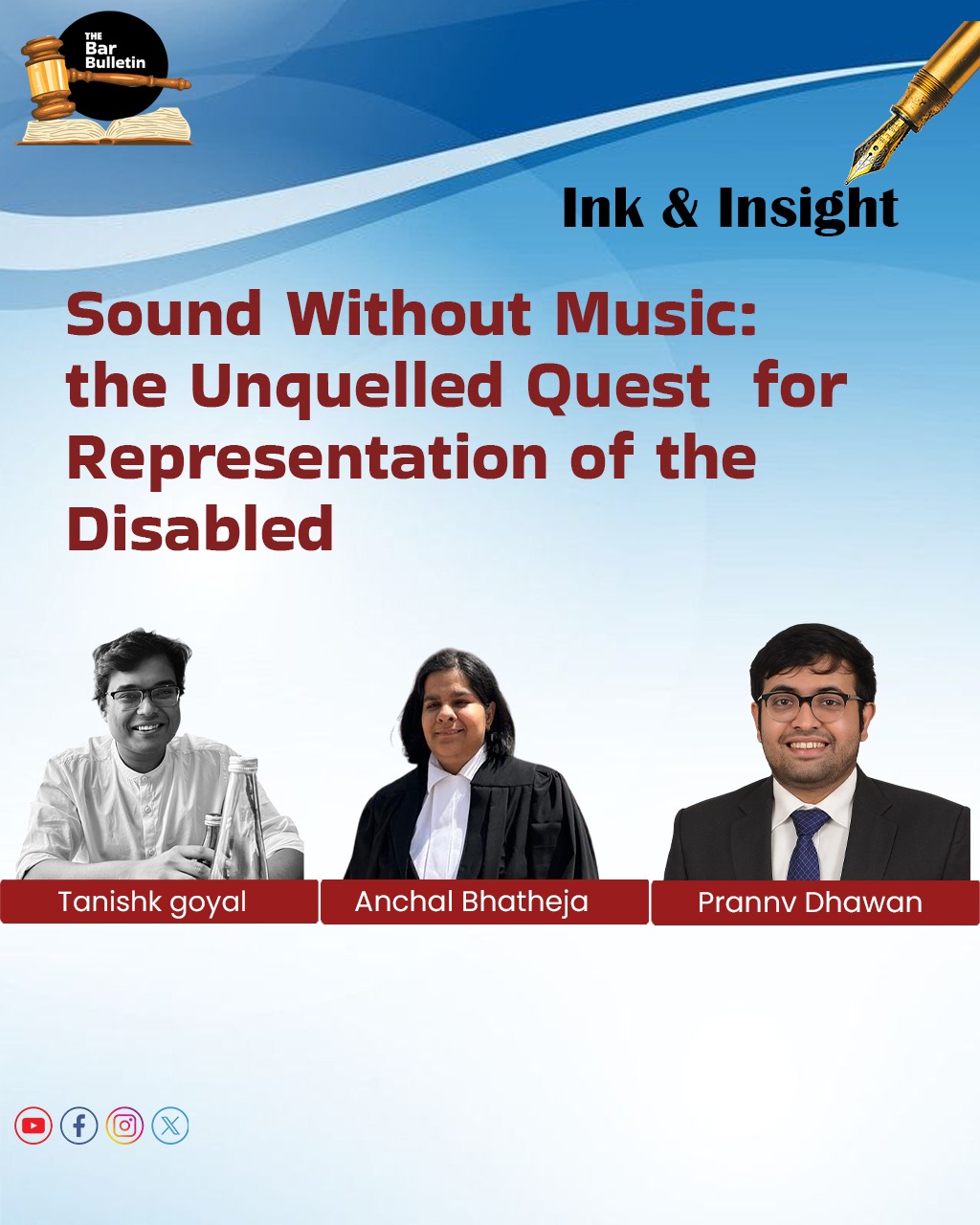An orchestra missing entire sections of instruments might still produce sound, but it will never create music. Similarly, democratic governance without meaningful representation of persons with disabilities (PwDs) seems complete on paper, yet it lacks the depth and harmony that justice demands.
We have often witnessed how PwDs have had to fight to get a seat—a voice—in this orchestra. Landmark cases like Om Rathod v DGHS[1]; Kabir Pahariya v NMC[2] and Rekha Sharma v High Court of Rajasthan[3] have repeatedly exposed the systemic barriers that deny PwDs meaningful inclusion in education, employment, and governance. The Madras High Court’s recent observations in B. Rameshbabu v. Union of India[4] that PwDs deserve equal and due representation in statutory bodies such as the Bar Council of India and the National Medical Commission are a welcome but ultimately limited step in this ongoing struggle.
The present case was brought before the Madras High Court by a petitioner who challenged the exclusionary practices of statutory bodies like the Bar Council of India and the National Medical Commission, which have long failed to ensure representation of PwDs in their decision-making processes. The petitioner argued that this lack of representation not only violates the RPwD Act but also perpetuates systemic ableism, undermining substantive equality. The Court acknowledged the need for equal representation but stopped short of issuing binding directions, instead advising the concerned bodies to “undertake appropriate steps” toward inclusion under Section 33 of the RPwD Act.
Law And its Exclusionary Sound
The Rights of Persons with Disabilities Act, 2016 (‘RPwD Act’) codifies the minimum guarantee of representation of PwDs in higher education institutions and public services. Yet, the PwD representation in India and other Global South countries remains dismal because their candidature faces stiff resistance from bodies in charge of such admissions and recruitment.
The resistance is rooted in the ableist conception of merit that translates into exclusionary eligibility conditions in recruitment notices, medical fitness tests, and disability assessment procedures (‘entry barriers’) enforced by state agencies and professional regulators.
These entry barriers prevent the inclusion of PwDs in three respects. First, they presume the absence of competence of PwDs. Second, they structurally invisibilize the unique competence of PwDs. Third, they perpetuate and normalize ableist work conditions.
Declaration Sans Remedy
The Madras High Court’s judgment builds on the trajectory of disability rights precedents set by the Supreme Court that pave the way for such recognition. However, the order is a weak form of the capacious constitutional conception of judicial remedy.
The judgment leaves much to be desired for five key reasons.
First, the Court disposed of the case at the post-admission stage without directing any of the statutory bodies to respond or justify their exclusionary practices. It relied solely on Section 33 of the RPwD Act, without engaging with the broader statutory and constitutional scheme or examining how the representational deficit in professional regulators entrenches ableism.
Second, the court merely issued an advisory to the statutory bodies to consider representation. Such a non-binding suggestion, in a context that cries out for structural reform, falls far short of the court’s constitutional powers under Article 226. This narrowed remedy reveals a self-imposed restraint that weakens the transformative potential of constitutional adjudication.
Third, the court’s reliance on the Supreme Court’s decision in BD Kaushik v. Union of India[5] to avoid issuing binding directions is unconvincing. While Kaushik rightly upheld women’s representation in the Supreme Court Bar Association, it did so after a detailed legal analysis and concluded with enforceable directions. The Madras High Court’s suggestion that similar relief can only be granted under Article 142 is a constitutional cop-out. Article 226 itself empowers High Courts to craft structural remedies, a power they have exercised effectively in the past. For instance, the Delhi High Court in Court on its own motion v. Union of India[6], passed comprehensive directions to enhance availability and accessibility of government hospitals in Delhi. Such examples are not at all a rarity.
Fourth, the judgment reflects a broader jurisprudential hesitancy that plagues constitutional courts: the tendency to act reactively and individualistically rather than systemically and proactively. This approach undermines the judiciary’s constitutional mandate to advance the rights of historically marginalized groups. The Madras High Court’s refusal to issue substantive directions, and engage with the petitioners any further than it did, despite a compelling case, reveals an overly formalistic and self-limiting understanding of its jurisdiction—one that is unmoored from the emancipatory promise of the Constitution. This refusal concurrently reflects the growing tendency of Indian constitutional courts to jurisprudentially disassociate from PwDs. It acknowledges the scheme of the RPWD Act, underscores the obligation of the State and private parties to provide additional support to PwDs to facilitate their full and effective participation in society, and leaves the case just there with a ‘nudge’ to the respondents to take appropriate steps in this regard. This is a classic case of jurisprudential disassociation, and a missed opportunity for dialogic judicial review.
Fifth, while the court quotes the Supreme Court’s decision in Vikash Kumar v. UPSC[7], , it fails to honour its transformative potential. The judgment in Vikash Kumar is grounded in the social model of disability and requires remedies that go beyond individual relief to challenge systemic exclusion. The Madras High Court’s decision to limit itself to non-binding advisories is a missed opportunity to operationalize this vision and catalyse meaningful reform.
If the law has to be used as a tool for ensuring meaningful democratic governance, courts will have to move beyond passive recognition of the rights of PwDs. They will have to deploy their writ jurisdiction proactively and use it to craft ex ante remedies that move beyond symbolic recognition. The challenge today is no longer whether the orchestra will play, but whether it will play the music that includes every voice.
*Prannv is an LLM candidate at Yale Law School
**Anchal is a research fellow at Vidhi Centre for Legal Policy
***Tanishk is a Delhi Based Lawyer.
[1] 2024 SCC Online SC 3130
[2] 2025 INSC 623
[3] 2025 INSC 551
[4] W.P No. 18378 of 2025
[5] I.A. No.94918/2025 In MISCELLANEOUS APPLICATION
[6] 2024 SCC OnLine Del 938,
[7] (2021) 5 SCC 370

